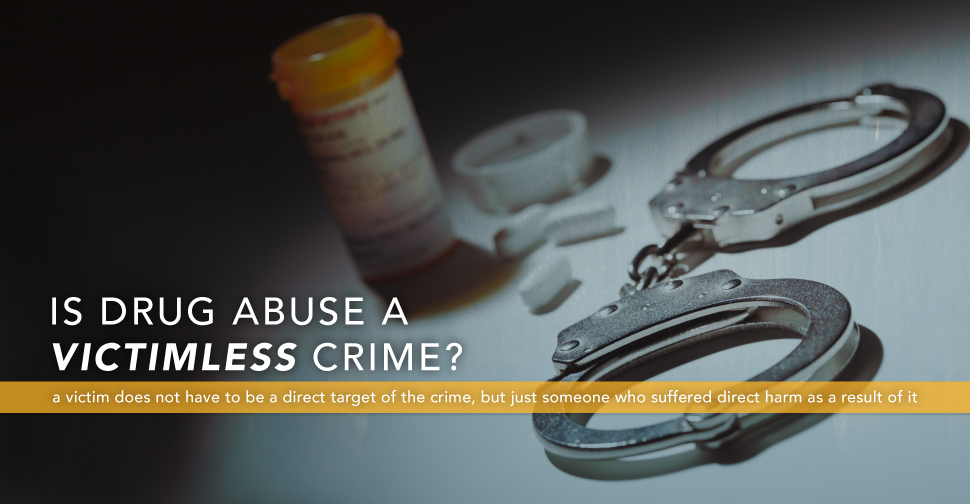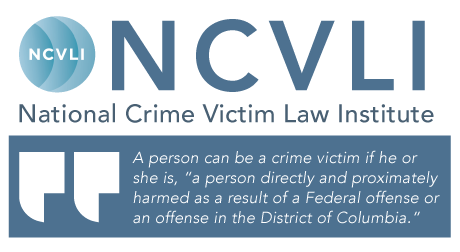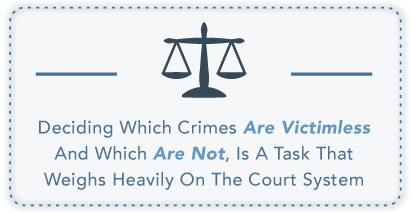
The drug abuse problem in the United States is rampant. That is no secret. Substance overdose statistics alone show that drug abuse is negatively affecting thousands every year, though reports show millions are actively abusing substances. For those who have never been ensnared by the powerful grip of substance abuse, it may seem blatantly obvious that substance abuse claims many victims. But society is still struggling to determine whether or not drug abuse is a victimless crime. That is because, when it comes to drug abuse, as with many nonviolent crimes, there are many factors to consider when deciding if it is a victimless crime.
What Is Victimless Crime?
People tend to have opposing views on the exact definition of a victimless crime. Because of this, under the Crime Victims’ Rights Act (CVRA) in 2004, a standard was set by which potential victimless crimes could be measured. The CVRA first identified who could be a “crime victim.” A person can be a crime victim if he or she is, “a person directly and proximately harmed as a result of a Federal offense or an offense in the District of Columbia,” according to an article in the National Crime Victim Law Institute.

The article also states that victimless crime often refers to crimes that are thought to do no harm to society, where crimes with victims do actual harm to individuals. However, not everyone agrees that a crime exists which could do no harm to others. Substance abuse is one of the crimes which spurs debate on this issue.
While substance abuse may harm the health—psychological, emotional, and physical—of those who engage in it, other people may be affected as a result of abuse. A person who harms his or her child because he or she is “high” may be engaging in a crime. In that case, substance abuse is not a victimless crime. Yet, to prove a person became a victim as a result of the crime, several things must be considered.
Determining What Is A Victimless Crime
How can you prove which situations cause a person under the influence of substances to commit a crime? Deciding which crimes are victimless and which are not is a task that weighs heavily on the court system. This decision calls on the CVRA definition. First, it must be determined if the crime committed, “causes a party direct and proximate harmful effects.” If so, then the party harmed is deemed a victim under the CVRA.
While this definition may seem too restricted, the CVRA broadens the definition to include anyone harmed indirectly as well. In other words, a victim does not have to be a direct target of the crime, but just someone who suffered direct harm as a result of it. But how can the court determine who was harmed, as harm constitutes a broad definition as well? The court establishes whether a victim has been harmed due to the conduct of the offense on a “but-for” basis.

The “but-for” basis works like this: if a person is harmed, and it can be proven that the person could not have been harmed “but for” the commission of the crime, then that person is a victim of the crime. To better explain, if a person is shot, the court may decide that person could not have been shot if the person who shot him or her had not committed the act. After deciding if the crime affected the victim as a “but-for” cause, the court also has to decide if the conduct of the person who committed the crime was the “proximate cause” of the harm.
What constitutes proximate cause? According to the CVRA, “foreseeability is at the heart of proximate cause; the closer the relationship between the actions of the defendant and the proximate harm sustained, the more likely that proximate harm exists.” To put it plainly, proximate cause of a crime may exist when a person’s actions (which result in the crime) cause direct harm to the victim.
Determining If Drug Abuse Is A Victimless Crime
Though the court system is still struggling with each individual case of potential victimless crime, the CVRA determined guidelines by which to measure crime. Essentially, crimes must be measured against the principles of cause in order to determine if anyone harmed from the crime is, in fact, a victim.
In the case of substance abuse, this can mean that a person had to be harmed as a result of the crime in order for a victim to be named. As mentioned previously, a substance abuse crime may not be victimless if a person who is abusing substances harms a child close to him or her. Or, if a person is driving “drugged” and gets into a car accident which harms another person, that person may be a victim. In each of these cases, the court would have to prove that the harm would not have taken place without the actions, such as substance abuse. This can be a tricky thing to prove in some situations.

For people who have been affected by substance abuse because of a loved one, it may seem frustrating that the damages a person can sustain from substance abuse are not enough to convict people of crimes. In many cases, prolonged substance abuse can cause a person to seek substances with little to no regard for personal responsibilities, like work, family, or school. For these people, the victims are their families, loved ones, and employers or coworkers. The damage to these people can be extensive, whether in physical, emotional, or psychological form. Unfortunately, the judicial system does not necessarily take into account these unintended victims of substance abuse. In determining if substance abuse is a victimless crime, the court system must stick to facts—who was harmed, by whom—in order to be just and fair.
But there is a way to help those who are victims of substance abuse, both those who have fallen victim to abuse and those who have been affected by abuse because of someone close to them. Prevention, education, and treatment are the best ways to combat substance abuse, and are our best hope in lessening the amount of substance abuse crimes, whether they are victimless or not.
Reducing Substance Abuse Crime: Get Treatment Today
 If you have ever known someone who suffered from substance abuse, then you may know how difficult it can be to let go of it. If you or someone close to you is struggling, you don’t have to wait until substance abuse takes a toll on your life. Contact us today at DrugRehab.org to find out how you can begin treatment.
If you have ever known someone who suffered from substance abuse, then you may know how difficult it can be to let go of it. If you or someone close to you is struggling, you don’t have to wait until substance abuse takes a toll on your life. Contact us today at DrugRehab.org to find out how you can begin treatment.
Sources
National Crime Victim Law Institute — Protecting The Victims Of “Victimless” Crimes
New Boston Post — Drug Abuse Is Not A Victimless Crime
Sun Sentinel — Drug Use Not A Victimless Crime

